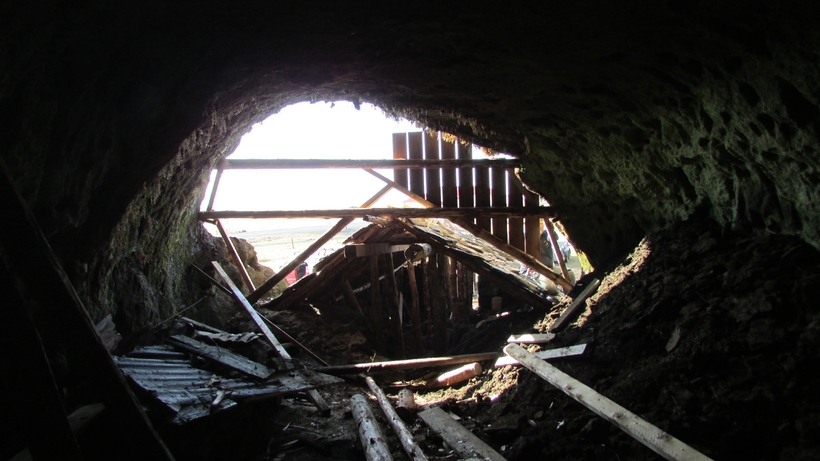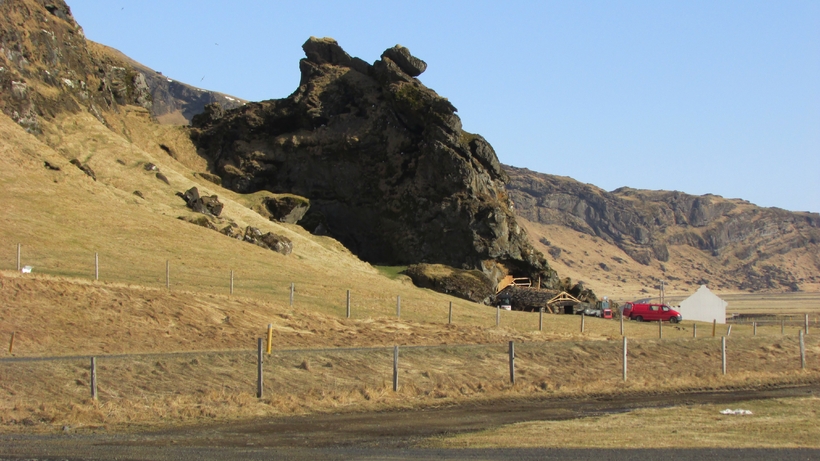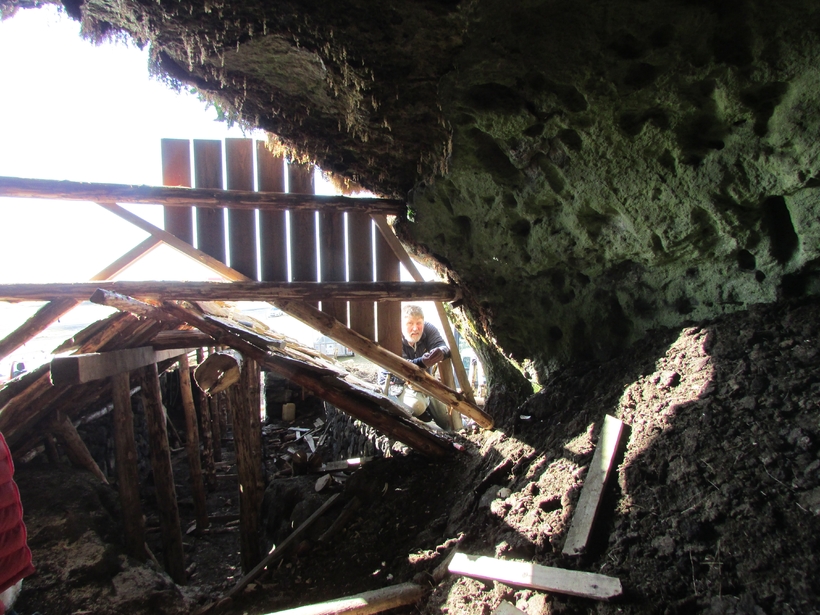A mysterious cave in Iceland reputed for human sacrifices
A photograph taken from the inside of the cave looking out. Two further floors lie deeper inside the cave. Mbl.is/ Kristín Heiða
A centuries old man-made cave on three floors by the Eyjafjöll mountains in North Iceland lies within a sheepcote which is now being rebuilt for the Cultural Heritage Agency of Iceland.
Morgunblaðið interviewed the two brothers who are building it who told of the dark tales associated with it.
The brothers Benjamín and Guðjón Kristinsson are big, strong men from the Drangar area in Strandir. Here they are outside the sheep pen which they are rebuilding. Mbl.is/ Kristín Heiða
"If you go beyond this sheepcote and into the rock you will discover a very interesting cave made by human hands, and noone knows how old it is. It's large, on three floors and you can see many stages of building inside. Wooden panels have been placed in the roof and the innermost part has a cut-out space for beds. We imagine that a lot of the local people were conceived here in the past," says Guðjón Kristinsson, who along with his brother Benjamin is reconstructing the old sheep pen in front of the cave, which lies in Hrútafell, Eyjafjöll and is locally known as Rútshellir (Rút's cave).
"The sheepcote was built in the 1930's and is important in that it shows how the workmanship of times past and the twentieth century met. It has iron tiles in the roof for example, in conjunction with dry stone walling. It had mostly collapsed, half of the roof had caved in and the wood had deteriorated," he explains.
"The construction of the old sheep pen is in the typical old nordic construction style, a style dating from the bronze age, and it's been really interesting to rebuild."
Guðjón says that sheep were kept in the building for centuries and that it was also reputed for outlaws who lived inside the cave and robbed the nearby farms. "I heard that the farmers chased them and killed them finally, but I don't know that story well enough to tell it," he laughs.
The sheep pen stands just below this rock and the cave is carved into the rock. Mbl.is/ Kristín Heiða
The cave within the sheep pen, according to Guðjón, contains much darker secrets, however.
"In 1936, Nazis came to visit the cave and were doing research on it,"says Guðjón. They were from a scientific, academic wing of the SS troops under the command of Heinrich Himmler, known as The Ahnenerbe, who sent teams of archeologists to various places around the world.
"On the second floor of the cave you can see that they carved a swastika on the wall. The archeologists working for the Nazis believed that pagans had conducted human sacrifices in the cave. Blood sacrifice. There are signs that allude to this, there are ancient hooks on the wall and cups carved into the floor. The archeologists believed that the pagan settlers had tied up slaves in the cave, cut their throats and let the blood seep into the cups."
Benjamin, adds thatdespite these markings and hooks inside the cave, sources are scarce and proof is none. "There are however written sources that tell of the settlers in Eyjafjöll and how they made their slaves construct the caves here."
Guðjón tells another story that's well known about the cave from a time when it was used as an actual farmhouse.
"A French ship sank just off the coast and only one young man was saved. The locals brought him into the cave, freezing cold and nearly dead from his ordeal. The farmer's wife undressed and got into the bed with the man to warm him up and save his life. A while later the farmer thought it was getting a bit too warm under the covers as the Frenchman was seemingly making love to his wife. He asked his wife to tell the man to stop immediately and nothing happened. On a second occasion he asked her, and nothing happened. When he demanded her for the third time, his wife replied: You tell him yourself, I can't speak French!"
The interview was written in Icelandic originally in Morgunblaðið by journalist Kristín Heiða Kristinsdóttir khk@mbl.is













